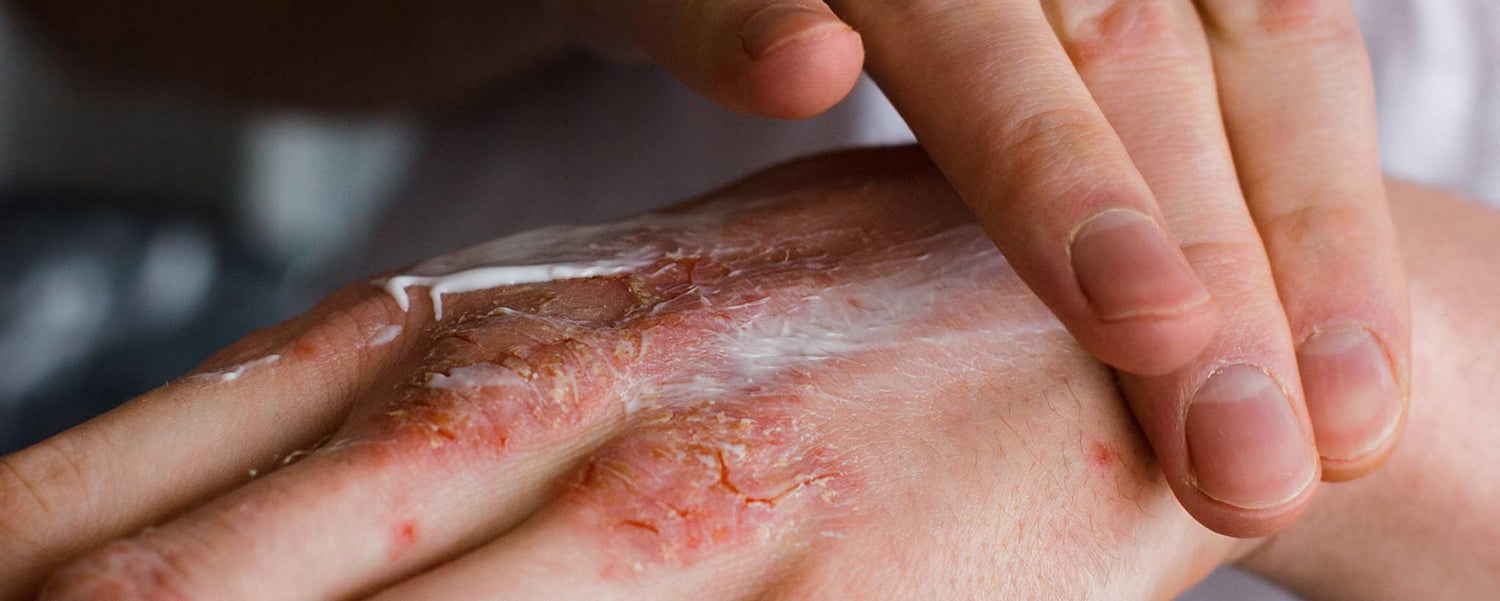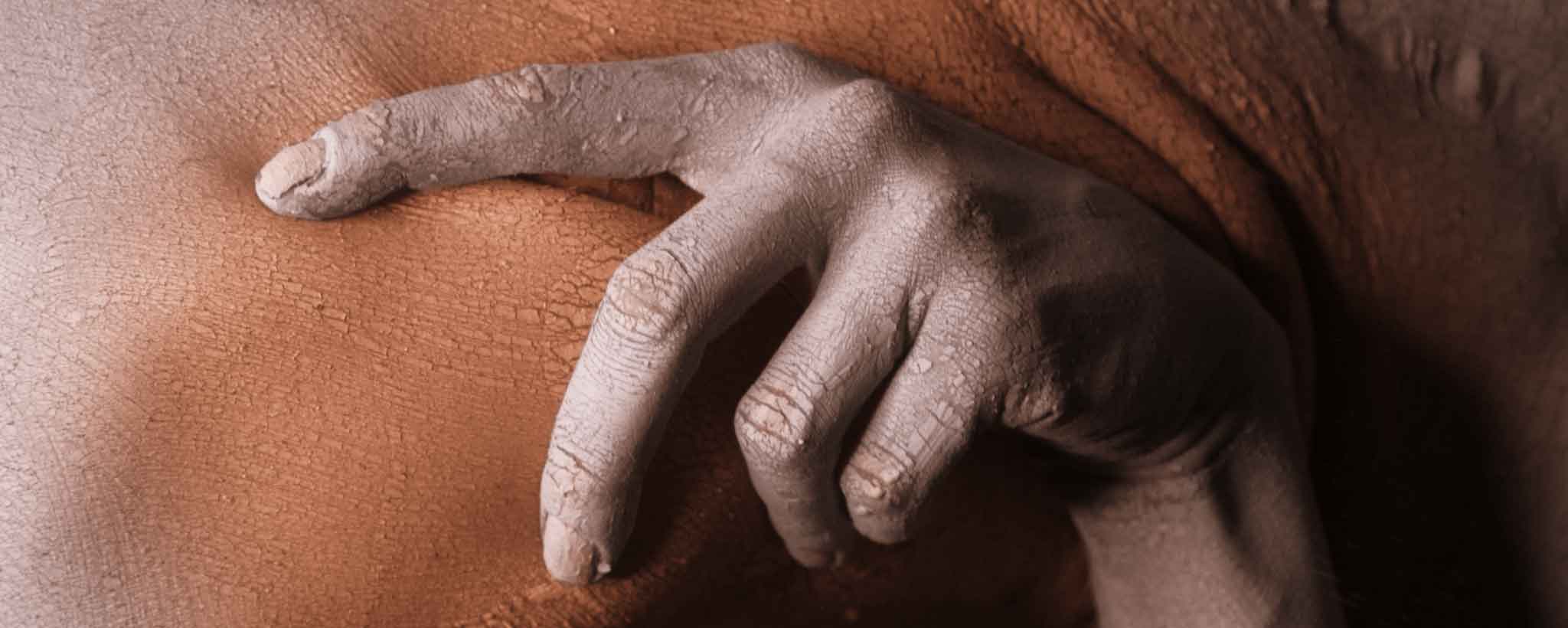Each day you care for your skin. No blemish escapes your notice. Now, your skin begins hardening or flaking.
Tightening and Hardening Skin
Imagine patches of your skin or internal organs slowly turning into jerky—a process that preserves dried salted meat without refrigeration. However, instead of preservation, this leads to atrophy and loss of mobility.
The autonomic disorder called “scleroderma” is derived from two Greek words: “sclero” meaning hard, and “derma” meaning skin. Some refer to it as ‘the disease that turns people to stone.’ Biologically, the body’s fibroblasts produce too much collagen, leading to fibrosis of the skin and sometimes the internal organs.
Doctors will want to rule out other causes of skin dryness. It could be a reversible reaction to a drug prescription or an over-the-counter cosmetic. You may need to drink more water. The exact causes of scleroderma are still unknown. Not all scleroderma hardens all of your skin or internal organs.
Skin problems associated with scleroderma can sometimes fade away on their own in two to five years. The type of scleroderma that affects internal organs usually worsens with time. Researchers in the field of dermatology classify scleroderma into four main types:
Classifications of Scleroderma
1. Localized Scleroderma is usually limited to a few places on the skin or muscles and rarely spreads elsewhere. It is relatively mild without generally affecting internal organs. Persons with localized scleroderma rarely develop systemic scleroderma.
2. Morphea is a form of localized scleroderma, characterized by waxy patches on the skin of varying sizes, shapes, and colors. The skin beneath patches can thicken. The patches may enlarge or shrink and often disappear spontaneously. Morphea usually appears between the ages of 20 and 50, but is often seen in young children.
3. Linear scleroderma is a form of localized scleroderma that frequently begins as a streak or line of hardened, waxy skin on an arm or leg or the forehead. Sometimes it forms a long crease on the head or neck, referred to as en coup de sabre because it resembles a saber or sword wound.
Linear scleroderma tends to penetrate through deeper layers of the skin. It sometimes affects the motion of the joints, which lie underneath. Linear scleroderma often develops in childhood, where the growth of involved limbs is compromised.
4. Systemic scleroderma (systemic sclerosis) can affect the skin, esophagus, gastrointestinal tract (stomach and bowels), lungs, kidneys, heart, and other internal organs. It can also affect blood vessels, muscles, and joints. The connective tissues of involved organs become hard and fibrous, causing them to function less efficiently.
The term systemic sclerosis indicates that “sclerosis” (hardening) may occur in the internal systems of the body. Systemic scleroderma can lead to pulmonary hypertension—high blood pressure in the blood vessels of the lungs.
There are two major recognized patterns that the illness can take—diffuse or limited disease. In diffuse scleroderma, skin thickening occurs more rapidly and involves more skin areas than in limited disease. In addition, people with diffuse scleroderma have a higher risk of developing “sclerosis” or fibrous hardening of the internal organs.
💊 Omeprazole may cause erythematosus
March 29, 2016 – Some people who take proton pump inhibitor (PPI) medicines, including Omeprazole delayed-release capsules (generic for Prilosec), develop subacute cutaneous lupus erythematosus (SCLE), an autoimmune disorder, or worsening types of lupus erythematosus. This may be manifest as skin reddening or hardening.
The U.S. FDA does not recognize SCLE as an adverse event associated with PPIs. In testing, discontinuation of PPI resulted in remission, with PPI re-challenge causing SCLE to recur. Call your doctor right away if you have new or worsening joint pain or a rash on your cheeks or arms that gets worse in the sun. —Drug-Induced Subacute Cutaneous Lupus Erythematosus Associated with Proton Pump Inhibitors, Nitish Aggarwal.
About half of patients have a slower and more benign limited scleroderma, with less widespread skin thickening. It is typically confined to the fingers, hands, and face, and develops slowly over the years. Although internal problems occur, they are less frequent and tend to be less severe than in diffuse scleroderma, and are usually delayed in onset for several years.
However, persons with limited scleroderma, and occasionally those with diffuse scleroderma, can develop pulmonary hypertension, a condition in which the lung’s blood vessels become narrow, leading to impaired blood flow through the lungs, resulting in shortness of breath.
Limited scleroderma is sometimes (formerly) called CREST syndrome. CREST stands for the initial letters of five common features:
- Calcinosis
- Raynaud Phenomenon
- Esophageal dysfunction
- Sclerodactyly
- Telangiectasia
Diagnosing Scleroderma
Despite clearly articulated scleroderma categories, some people with diffuse disease develop calcinosis and telangiectasias so that they also have the features of CREST. Although most patients can be classified as having either diffuse or limited disease, patients may have different combinations of symptoms.
No single test ensures a definitive diagnosis, but serologic testing for autoantibodies is helpful. About 300,000 people in the United States have a form of scleroderma, and nearly one-third of these (perhaps 75,000 to 100,000) are believed to be affected by its systemic variant.
Patients diagnosed with advanced systemic disease have a prognosis of anywhere from three to 15 years or more, depending on the severity of the complications involving the lungs or other internal organs.
Raynaud’s phenomenon, characterized as episodic constriction of blood vessels in response to environmental factors such as cold, stress, or emotional changes, causing cold extremities and cyanosis, may be present for many years before any other clinically significant symptoms or systemic manifestations occur.
Scleroderma Treatment
Not all skin hardening or dryness is due to scleroderma. The lack of nutrients, need for probiotics, or inadequate water consumption is implicated in dry skin.
Collagen gives skin its elasticity. When your body makes collagen, it combines amino acids—nutrients you get from eating protein-rich foods, like beef, chicken, fish, beans, eggs, dairy products, bone broth, nuts, and leafy vegetables.
As we age, our bodies decrease our ability to synthesize nutrients. Supplements like hydrolyzed collagen (or “collagen peptide”) powder may be useful. You may need to eliminate caffeine from your diet. For a topical solution, try using a chemical-free moisturizer.
Presently, there is no cure for scleroderma. Doctors prescribe creams, ointments, and pain relievers, and provide other treatments to slow fibrotic damage and manage symptoms. Steroid creams or pills may help reduce swelling and joint pain or loosen stiff skin. Immunosuppressive drugs are sometimes used.
Joining a scleroderma support group, such as one affiliated with the Scleroderma Foundation, enables scleroderma patients to meet and exchange information with others who have similar problems.
To support the writing of useful articles about dermatology, ClinicalPosters sells human anatomy charts, scientific posters, and other products online. You may sponsor specific articles, become a ClinicalNovellas Member, or remit a small donation.
ClinicalPosters sells human anatomy charts, scientific posters, and other products online to offset expense of the writing useful articles about dermatology. Slide extra posters into DeuPair Frames without removing from the wall.
Show your support by donating, shopping for ClinicalPins, becoming a ClinicalNovellas Member, or leaving an encouraging comment to keep the research going.
To support the writing of useful articles about dermatology, ClinicalPosters sells human anatomy charts, scientific posters, and other products online. You may sponsor specific articles or remit a small donation.
ClinicalPosters sells human anatomy charts, scientific posters, and other products online to offset expense of the writing useful articles about dermatology. Slide extra posters into DeuPair Frames without removing from the wall.
ClinicalPosters sells human anatomy charts, scientific posters, and other products online. You may remit a small donation or become a ClinicalNovellas Member.
You can support the writing of useful articles about dermatology by sponsoring specific articles, becoming a ClinicalNovellas Member, or remitting a small donation. Visible content is optimized for device size.







 Romance & Health Intertwine. Fall in love with a captivating romance miniseries that explores the essence of well-being. Become a ClinicalNovellas member for heartwarming tales.
Romance & Health Intertwine. Fall in love with a captivating romance miniseries that explores the essence of well-being. Become a ClinicalNovellas member for heartwarming tales.





